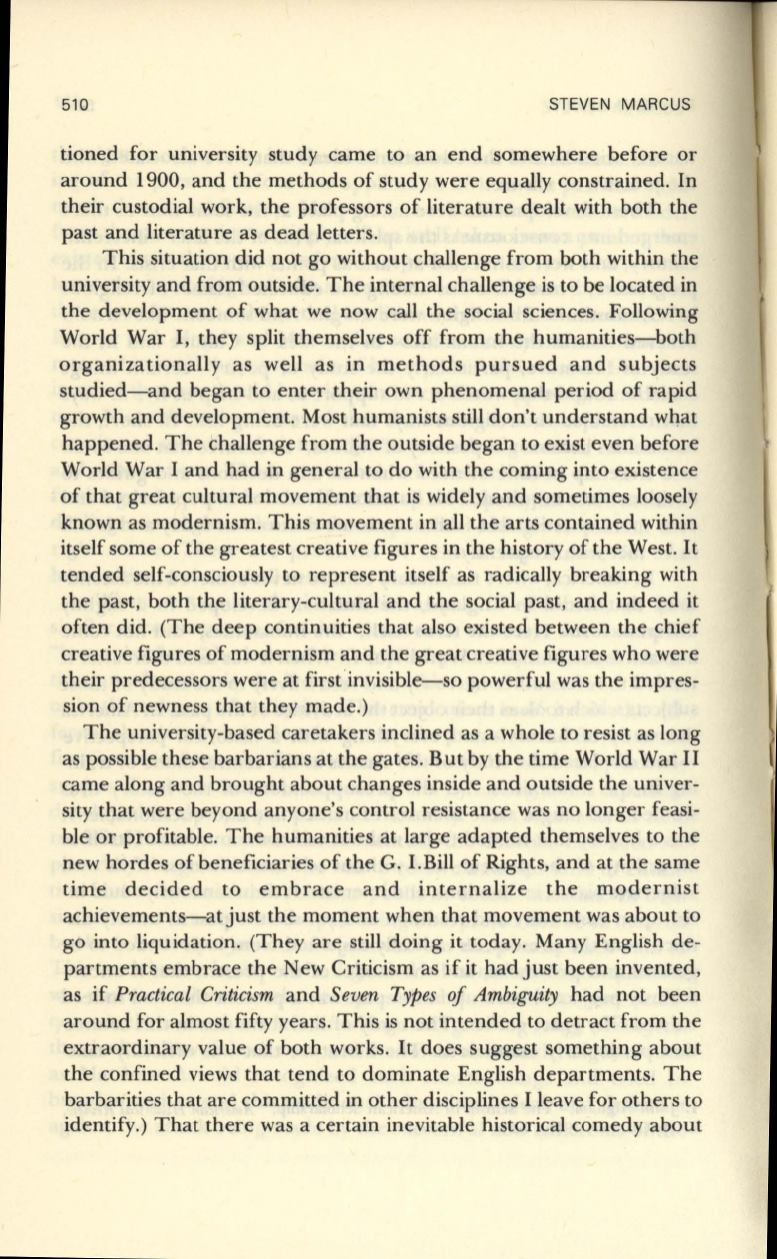
510
STEVEN MARCUS
tioned for university study came to an end somewhere before or
around 1900, and the methods of study were equally constrained. In
their custodial work, the professors of literature dealt with both the
past and literature as dead letters.
This situation did not go without challenge from both within the
university and from outside. The internal challenge is to be located in
the development of what we now call the social sciences. Following
World War I, they split themselves off from the humanities-both
organizationally as well as in methods pursued and subjects
studied-and began to enter their own phenomenal period of rapid
growth and development. Most humanists still don't understand what
happened. The challenge from the outside began to exist even before
World War I and had in general
to
do with the coming into existence
of that great cultural movement that is widely and sometimes loosely
known as modernism. This movement in all the arts contained within
itself some of the greatest creative figures in the history of the West.
It
tended self-consciously
to
represent itself as radically breaking with
the past, both the literary-cultural and the social past, and indeed it
often did. (The deep continuities that also existed between the chief
creative figures of modernism and the great creative figures who were
their predecessors were at firsdnvisible-so powerful was the impres–
sion of newness that they made.)
The university-based caretakers inclined as a whole
to
resist as long
as possible these barbarians at the gates. But by the time World War II
came along and brought about changes inside and outside the univer–
sity that were beyond anyone's control resistance was no longer feasi–
ble or profitable. The humanities at large adapted themselves to the
new hordes of beneficiaries of the G. I.Bill of Rights, and at the same
time decided to embrace and internalize the modernist
achievements-at just the moment when that movement was about to
go into liquidation. (They are still doing it today. Many English de–
partments embrace the New Criticism as if it had just been invented,
as if
Practical Criticism
and
Seven Types of Ambiguity
had not been
around for almost fifty years. This is not intended to detract from the
extraordinary value of both works.
It
does suggest something about
the confined views that tend to dominate English departments. The
barbarities that are committed in other disciplines I leave for others to
identify.) That there was a certain inevitable historical comedy about


